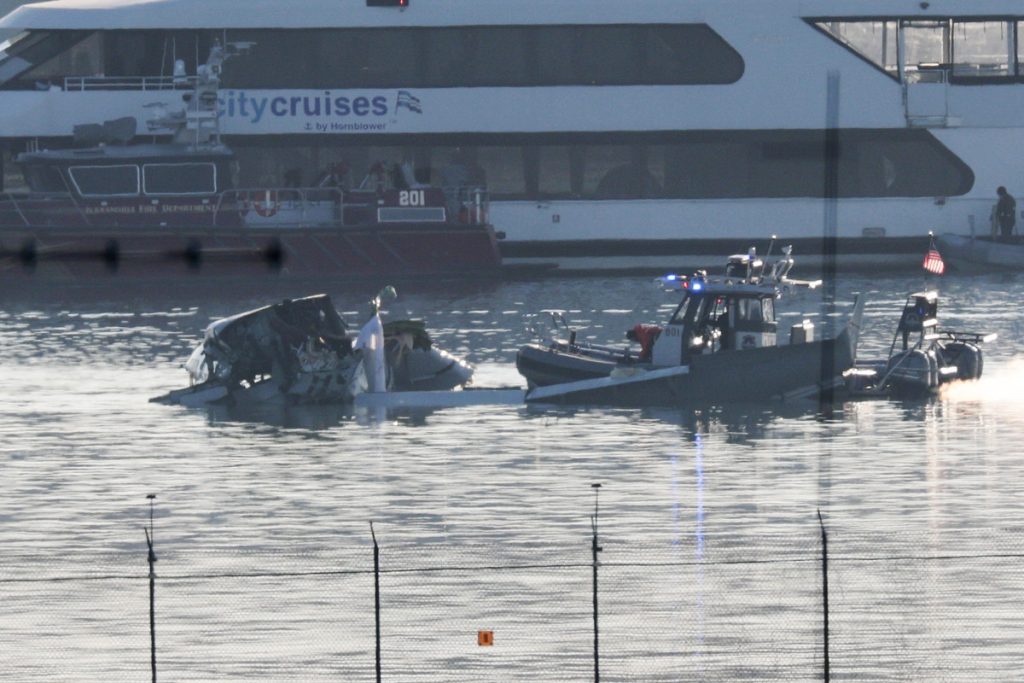The tragic collision between American Airlines Flight 5342 and a U.S. Army Black Hawk helicopter over the Potomac River near Washington D.C. on Wednesday evening has sparked a complex investigation into the circumstances leading to the deadliest U.S. aviation incident in nearly 25 years. Initial findings have raised crucial questions regarding the altitude of both aircraft at the moment of impact, highlighting discrepancies between preliminary data and eyewitness accounts. The retrieval of the flight data recorder and cockpit voice recorder from the American Airlines jet has provided some concrete information, while data related to the Black Hawk’s flight path remains elusive, adding further complexity to the ongoing inquiry.
The American Airlines flight, en route from Wichita, Kansas, to Ronald Reagan Washington National Airport, collided with the military helicopter shortly before 9 p.m. ET, resulting in the presumed deaths of all 64 passengers and crew onboard the jet, as well as the three military personnel on the Black Hawk. Recovery efforts have been challenging, with 42 bodies recovered and 38 identified as of Saturday. The investigation, led by the National Transportation Safety Board (NTSB), faces the painstaking task of piecing together the events leading to the collision, focusing primarily on the altitude of both aircraft in the moments preceding the impact.
Data retrieved from the passenger jet’s flight recorder indicates the aircraft was flying at an altitude of approximately 325 feet, plus or minus 25 feet, at the time of the collision. However, initial, unverified data from air traffic control suggests the Black Hawk was flying at roughly 200 feet. This significant difference in altitude readings has raised concerns and fueled speculation regarding the potential causes of the crash. The NTSB has acknowledged the discrepancy and emphasized the preliminary nature of the air traffic control data, stressing the need for thorough verification before drawing definitive conclusions. The absence of data from the Black Hawk further complicates the investigation, leaving a crucial gap in the understanding of the helicopter’s flight path.
Adding to the complexity of the situation, President Donald Trump publicly stated that the helicopter was flying “too high, by a lot,” suggesting a violation of the 200-foot altitude limit imposed on aircraft in the vicinity of the airport. Some reports have even indicated the Black Hawk may have been flying as high as 300 feet prior to the collision. These conflicting accounts underscore the challenges faced by investigators in determining the precise altitude of both aircraft and the role this played in the catastrophic event. The NTSB has been cautious in releasing information, acknowledging the “internal debate” surrounding the altitude data and emphasizing the need for rigorous verification of all available information.
The investigation also revealed a slight increase in the pitch of the American Airlines jet shortly before impact, a detail that has piqued the interest of investigators but requires further analysis to determine its significance. Additionally, the Black Hawk was engaged in a training mission that required the use of night-vision goggles. Investigators are currently working to ascertain whether the goggles were being worn at the time of the collision and, if so, whether their use may have contributed to the accident. These are just some of the numerous factors being considered by investigators as they strive to create a comprehensive picture of the events leading up to the tragedy.
The NTSB anticipates releasing a preliminary report within 30 days of the accident, providing an initial overview of their findings. However, a complete and detailed report, expected to take between one and two years to complete, will be necessary to fully understand the complex factors that contributed to this devastating collision. The meticulous investigation aims to provide answers to the grieving families and the public, while also contributing to improved aviation safety measures to prevent similar tragedies in the future. The recovery of the remaining victims and the analysis of all available evidence, including potential data from the Black Hawk, will be crucial in achieving a comprehensive understanding of this devastating event.

